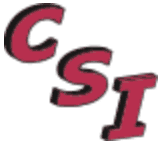Welcome to Communication Science, Inc.
posted Sun, May 06, 2018
By Don Zimmerman, Ph.D., Principal, Communication Science
Effectively reaching your audiences—whether you call them publics, customers, or clients—is becoming more and more difficult.
An information tsunami bombards them—they receive hundreds, if not thousands, of electronic, online, print, and face-to-face messages daily.
Consider these research findings:
- About 45% of the United States adult population has trouble reading simple news stories (U.S. Department of Education 2014).
- About 16% of adults comprehend below the basic level of reading—i.e., they lack the ability to read and understand news stories.
- About 29% of adults lack basic reading skills—but cannot accurately report key findings from a news article.
Recommendations: (1) Identify target audiences & their reading skills; (2) Draft copy using clear writing principles; (3) Run readability scoring to assess the grade level of draft copy; (4) Revise copy so the target can understand it; (5) Test copy with members of target audience.
- College students judged websites with higher aesthetic features as having more credibility (Robins & Holmes, 2008).
- As the contrast between text and background decreased, reading speed slowed (Saito, Saito, & Saito 2010).
- Users decide within 50 milliseconds whether they will use a website (Lindgaard, et al. 2006).
Recommendations: (1) Include some visuals to enhance aesthetics, (2) Ensure the contrast between text and background doesn’t slow reading, (3) Ensure users can find key information quickly, (4) Evaluate prototype design of websites with members of the target audience.
By capitalizing on current research and integrating evaluation into the production, transmission of your messages and evaluating your messages, you can enhance the effectiveness of your messages.
To help you, Communication Science, Inc. consultants:
- Provide research evaluation services to help you understand more about your audiences, what media they use, and how to tailor communications to your respective audience(s).
- Offer tailored workshops and seminars to fit your writing, editing, and communication production needs.
We bring decades of professional experience, research and evaluation experience, and teaching experience to each assignment.
Our backgrounds span writing, editing, and production of print and electronic media. Our research skills include usability testing, surveys, interviewing, evaluations, and other social science methods. We have taught diverse writing, editing, and production college courses, and workshops and seminars for high school and college students, professionals, scientists, and technical specialists. We have also taught theory, evaluation, and research methods courses, workshops, and seminars.
Future blogs will translate research findings and suggest how to apply the findings to improve your communications. Whether you’re a business, scientific, technical, or agricultural professional, the concepts will apply.
Resources
To learn more the topics discussed, check out the following references.
Berger, C. R., & Chaffee, S.H. (1987). Handbook of communication science. Newbury Park, CA: Sage Publications.
Lindgaard, G., Fernandes, G., Dudek, C. & Brown. J. (2006). Attention web designers: You have 50 milliseconds to make a good impression. Behavior & Information Technology. 25, 2, 115-126.
Robins, D., & Holmes, J. (2008). Aesthetics and credibility in website design. Information Processing and Management, 44, 386 — 399. DOI: 10.1016/j.ipm.2007.02.003
Saito, D., Saito, K., & Saito, M. (2010). Legibility evaluation ocularmotor analysis. The relationship between contrasting legibility. Electronics and Communications in Japan, 93, 9, 1058 - 1063.
U.S. Department of Education. 2014. National Assessment of Adult Literacy (NAAL). National Center for Education Statistics Washington, D. C. http://nces.ed.gov/naal/factsheets.asp.
